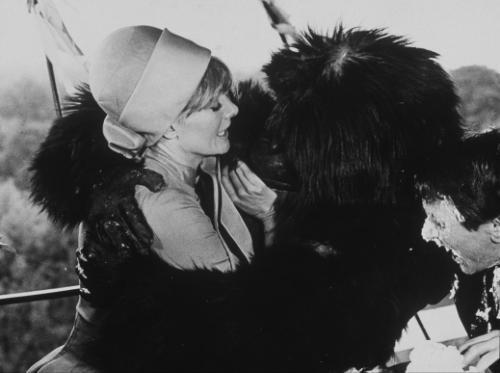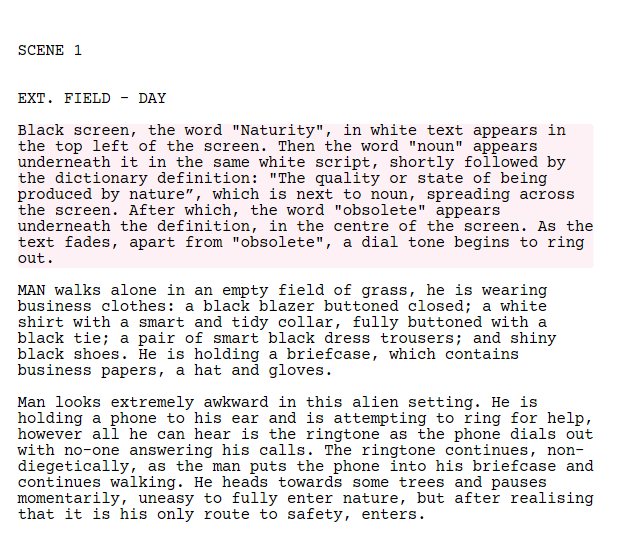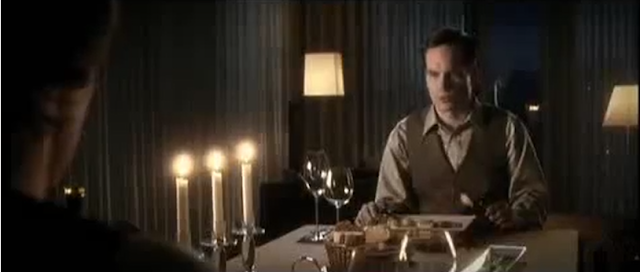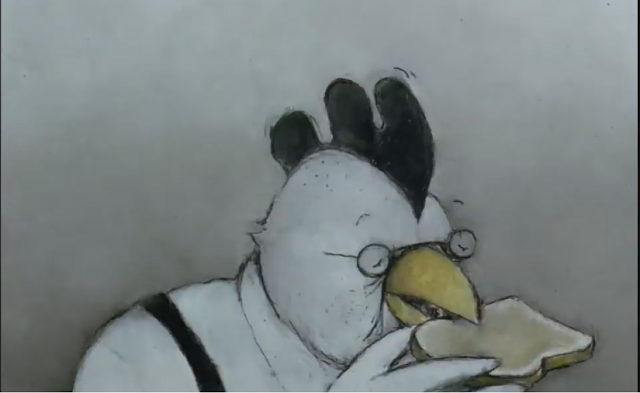"Naturity" evaluation
Featuring only one character, “Naturity” is the tale of Man, a businessman lost in the wilderness, who finds a new meaning to life due to being exposed to nature. It follows a simple narrative: Man’s quest to return to civilisation, however, features a shocking twist. When Man finally returns to society, he has embraced the natural world so that he no longer feels welcome in the urban environment. The audience is meant to sympathise with Man throughout, because at the start he is ordinary and easy to relate to in the fact that he is a modern urbanite, therefore an active audience would hopefully align with him. The message of the film is meant to speak directly to the audience because the character that they align with learns a lesson that consequently challenges beliefs about the modern world. During the night scene, the audience should be noticing the clear parallels between Man and his Neanderthal ancestors, who whilst considered primitive were infinitely more natural in the way t...




